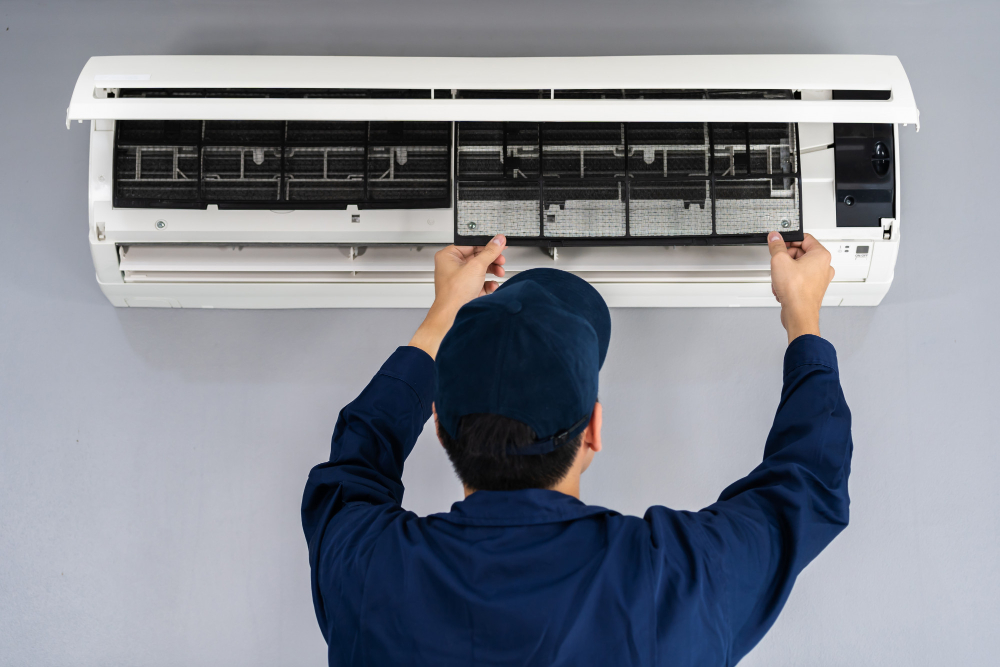HVAC (Heating, Ventilation, and Air Conditioning) units are just like their regular AC counterparts in the sense that they require servicing and maintenance for optimal performance. Suppose you follow a checklist of maintenance items. In that case, you can rest assured that your HVAC will work fine without significant malfunctions for many years.
1. USE ONLY THE BEST-QUALITY FILTERS AVAILABLE IN THE MARKET
Acquiring a new and high-efficiency filter is a costly solution to a non-existent problem. However, today’s HVAC filters are the latest in cutting-edge technology equipped with electrostatic energy. This means that they can effectively suck even the smallest particles of dust and allergy-causing pollen grains.
Another reason why you should replace the filters in your climate control system is because they tend to get clogged very quickly. This makes sense because they are the very first line of defense against the ingress of foreign matter into the HVAC system and your home.
After all, this is their primary function. They should be replaced after every six months of prolonged usage. But consider changing them more often if you live in an arid and dusty climate. At least once every three months.

2.CLEAN THE AREA AROUND THE EXTERNAL UNITS
The external AC units and the heat pumps must have at least two feet of ground clearance so that they will be able to function correctly. The area beneath and around them must be regularly swept clean of dirt, dust, leaves, and other debris. You should make sure that this is done after every storm.
Ducting and Insulation Issues
Once that is done, you should methodically examine all the refrigerant gas pipes, the ducts of your climate control system, and insulation lines. Checking the main power lines is essential since a thoroughly frayed wire or broken plug is a critical fire hazard. If there are any damaged wires, you should call the HVAC repair and maintenance experts to come and take a look.
Carbon Monoxide Detection
Carbon monoxide is also known as the silent killer. And with good reason, this highly deadly gas is colorless and odorless. In an enclosed climate control system, it can prove to be fatal.
You must thoroughly check and double-check the batteries of your HVAC’s carbon monoxide detector at least twice every year. It would be wise to get the experts in this field to take a quick look at the unit to ensure it is fully functional. They will check the appliance quickly and efficiently. You will have complete peace of mind that your carbon monoxide detection system is fully operating.
3.KEEP YOUR CONDENSER CLEAN
The condenser coil is a vital part of your air conditioning unit. It is responsible for extracting all the heat from your home’s interior and dumping it outside. As you can imagine, this means it will get dirty very quickly, especially if trees and shrubs surround the outdoor units.
If you do not clean your condenser coil regularly, it will result in the overheating of your HVAC unit. In turn, this will lead to soaring utility bills and frequent repairs. To avoid this costly scenario, spray water directly on the outdoor condenser coils every few weeks. Alternatively, you can use a pressure washer nozzle attachment specifically designed for this task.
4.REGULARLY CLEAN YOUR EVAPORATOR COIL
The evaporator coil is responsible for absorbing all the hot air from your home’s interior and cooling it down. This means that this HVAC system component is always damp, making it an ideal breeding ground for mold and bacteria. If you do not clean this part regularly, these microorganisms can accumulate to hazardous levels.
To clean the evaporator coil, you must use a chemical cleaner that is mild enough not to corrode the aluminum fins. After ten minutes, rinse it with cold water and wipe away any remaining residue with a dry cloth.
5.UNBLOCK THE CONDENSATE LINE
The condensate line collects all the excess water from the evaporator coil and carries it outside. It is a critical component of your HVAC system, and if it gets clogged, it can lead to serious problems. To check for blockages, pour water through the line and see if it flows freely. If there is a blockage, you must use specialized tools such as a wet/dry vacuum or a pipe cleaner to clear it out.
6.CHECK FOR REFRIGERANT LEAKS
The refrigerant is the chemical substance responsible for cooling the air inside your home. If there is any leakage, it can lead to a significant drop in performance and result in costly repairs. To check for leaks, you should hire an HVAC professional to use a leak detector and inspect the system thoroughly.
FOR ANY FURTHER QUERIES REGARDING THE HVAC MAINTENANCE CHECKLIST AND OTHER REPAIR AND SERVICE-RELATED ISSUES, YOU MAY CONTACT MILEHI HVAC. WE ARE HIGHLY QUALIFIED PROFESSIONALS IN THIS FIELD AND WILL CARE OF ALL YOUR HVAC-RELATED PROBLEMS.

